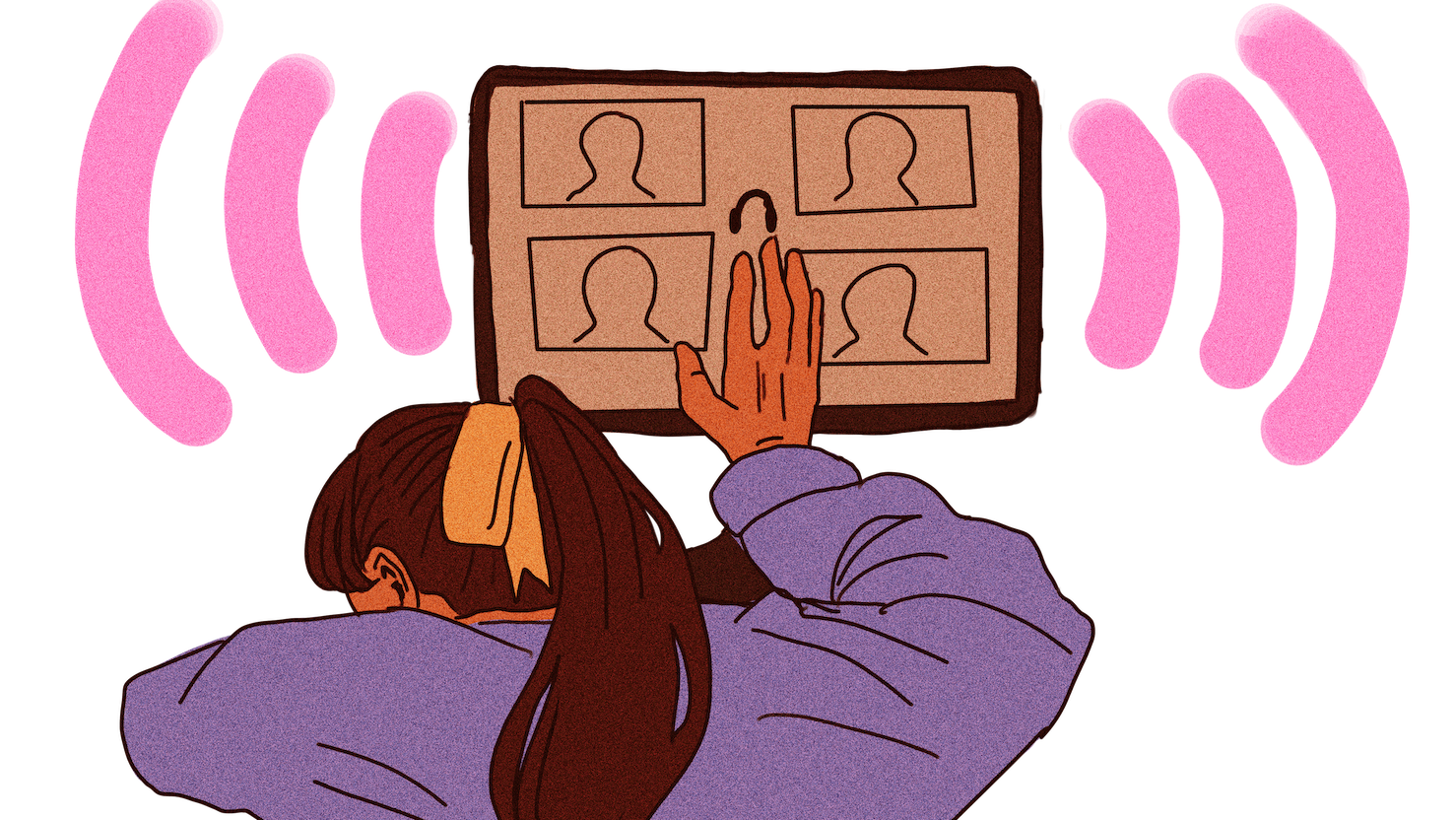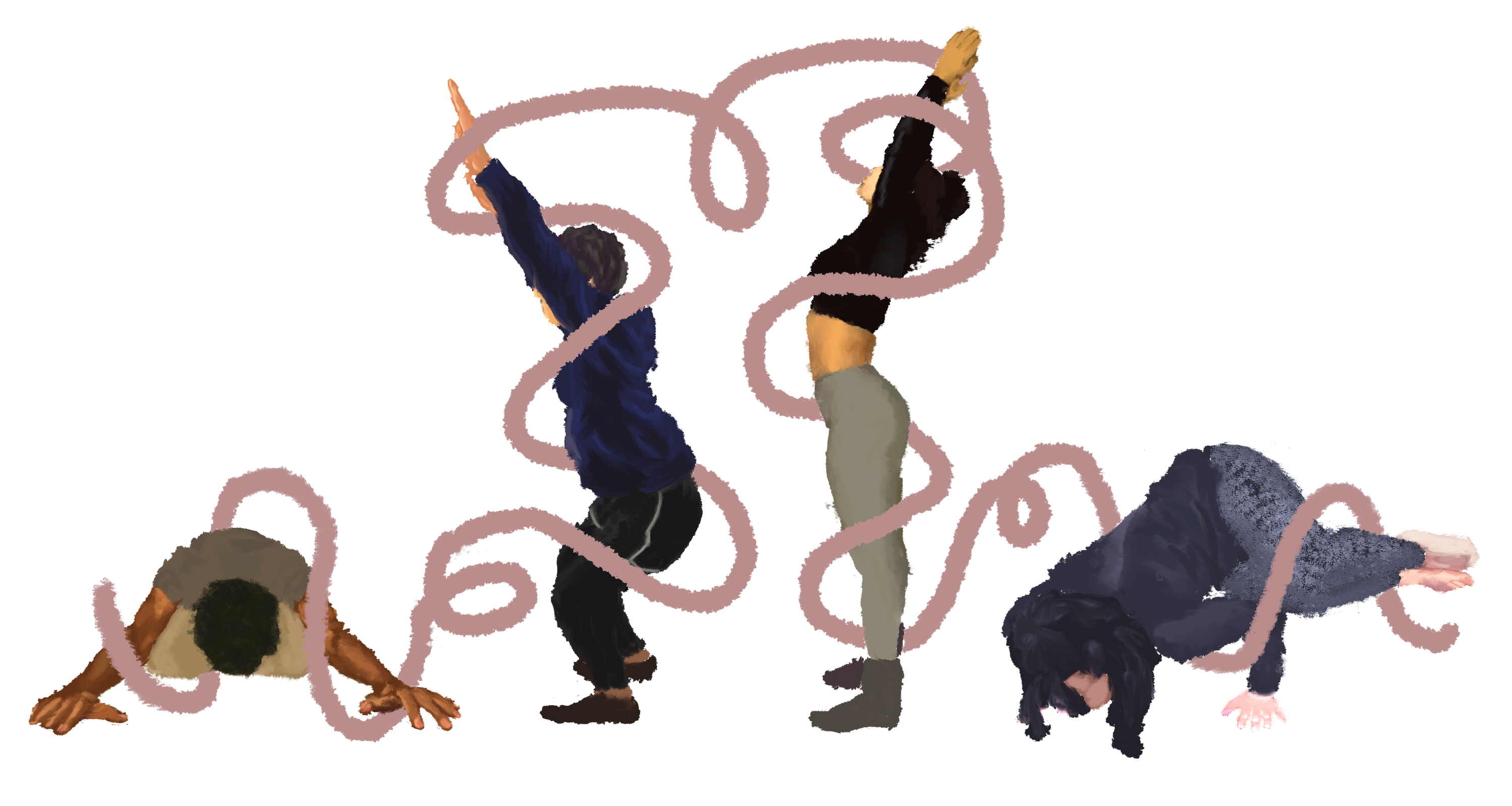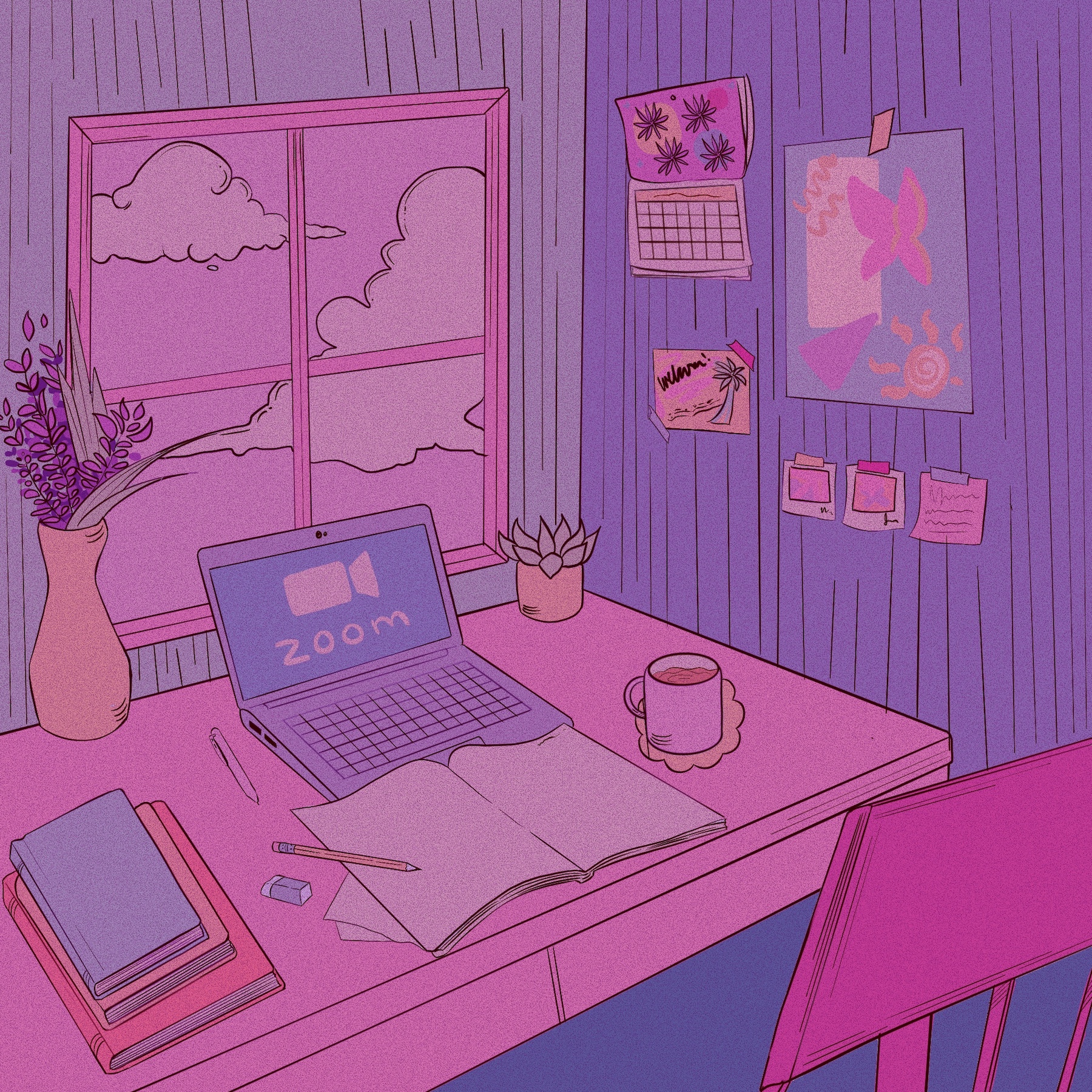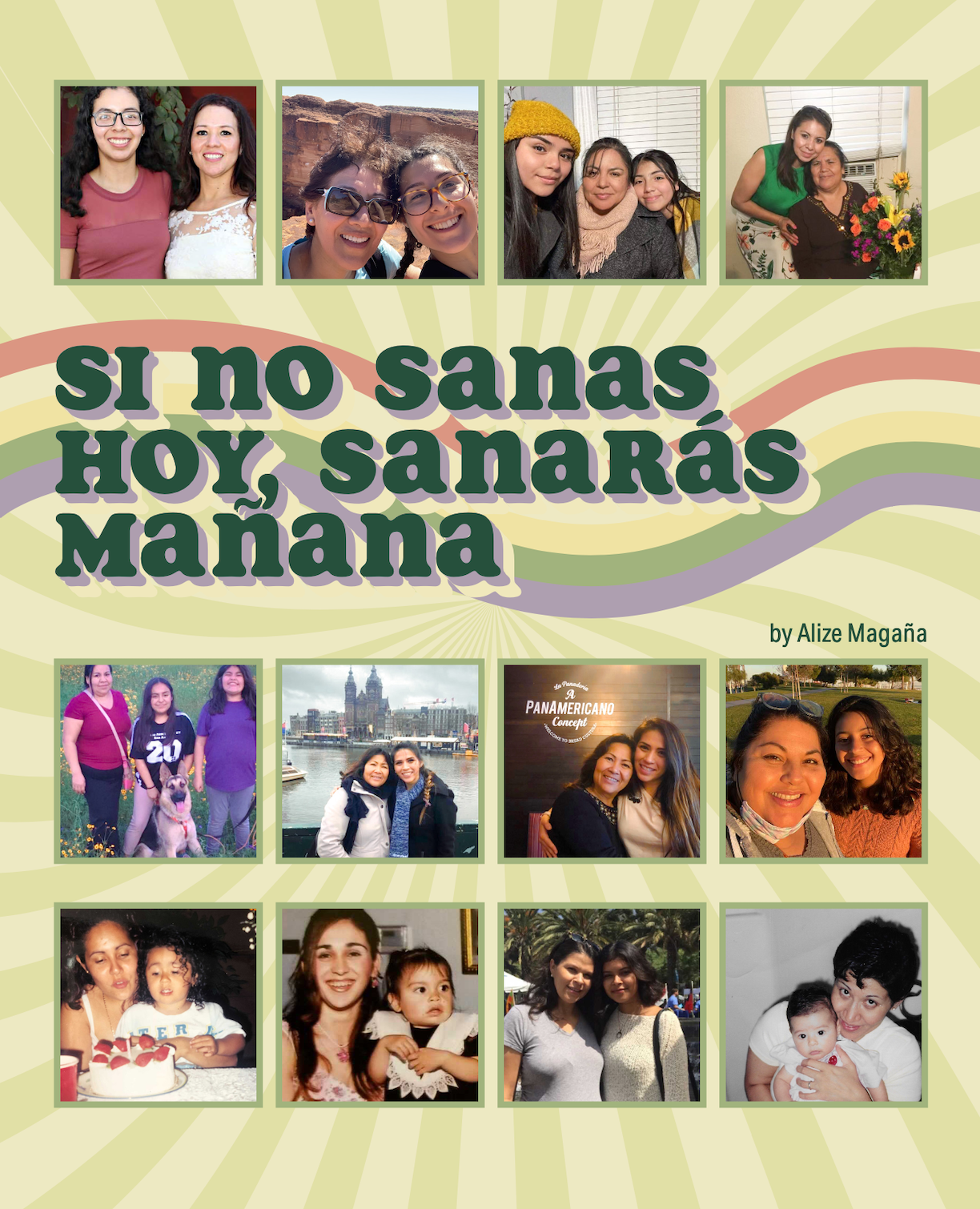We’re All at a Distance

Illustration by: Haven Morales
When we were told to stay home because of the coronavirus on the headlines of news stations, no one expected the turbulent and unprecedented year we would face. Students looked to 2020 with hope and optimism. The new decade symbolized hope for an era of accomplishments and national unity. I don’t need to tell you this was an idealistic and inaccurate perception of what 2020 would bring. But why did the virus affect many of us so negatively? And why is it that we crave to go to a classroom?
Even prior to COVID-19, plenty of university students turned to the more affordable and convenient online-education option. In 2015, a Slovanian study attempted to better understand the individualized virtual learning environment. Researchers set up an online learning platform for a classroom where students would complete projects. Apart from assignments, the platform contained a Semantic Annotation and Indexing Service, which connected students to external learning sources, such as discussion forums, posts, webpages, and posted documents. It also contained a Resource Recommendation Service that generated a list of recommended online resources within the system. The platform was based on Moodle, an online service similar to UCLA’s CCLE.
Results indicated that students who were more active in forum postings improved their academic performance. There was also a positive relationship between quality of social interaction and academic success, suggesting that the stronger student relationships were, the more work improved. Lastly, as student satisfaction with utilizing an online tool increased, academic success decreased. So, as students became well-versed in using the platform to complete assignments, it seemed that academic performance worsened (Bele et al., 2015). This is especially applicable to our current predicament where we continue to predominantly use online learning methods. It is clear that even if online learning is available, we must maintain interest by seeking relationships with peers whether through social media or reaching out in discussion forums. We can then feel connected and improve the quality of our work in the classroom.
Apart from online education, online relationships are as relevant as ever. Catfish, a TV show created in 2012, focuses on couples that date virtually without ever meeting in person. Kimberly Ludwigsen of Widener University, wrote a dissertation on “The impact of the internet on relationships.” She stated those with strong social connections had fewer stress-related health problems and lower risks of mental illness. In addition, relationships are essential for our health because they create psychologically safe spaces for us to learn and explore (2015). Unfortunately, we are now obligated to begin many of our friendships on the internet, and they may not hold these same benefits. Ludwigsen stated that the internet “has been negatively regarded for… absence of physical cues and personal interaction; resulting in lack of depth of emotion and interaction” (2015). While it has not been widely researched, we know that seeing someone through a screen doesn’t feel as genuine as in-person experiences. Luckily, the internet does provide the means to connect with people of common interests, build a support system, and foster a sense of community. It’s no wonder that we were lost on how to deal with interactions and friendships while social distancing. We either isolate from others completely or reach out through video calls, counting the days until we can meet.
University students, especially first-years, had a new challenge in front of them coming into 2020. Sean Lynch, an editorial assistant and Yale graduate, states “a university possessed a special glamour, and as I grew older, I identified with this glamour with the infinite freedom to redefine myself–with the project of self-discovery” (2020). He admits that the university is not perfect, and it comes with its own challenges, but nevertheless, many students long for the full campus experience. There is a diversity of people, activities, and classes that you’d be exposed to at every turn. He continues that for many of us, classroom conversations that would continue into the hallway or dining hall don’t occur, and interactions with a peer ends with a decision to leave the meeting. Aside from the changed campus, there are also disparities in our academic experience. Some students find quiet rooms in their homes where they can tune into a lecture on time. However, many others are in class between 12 am to 8 am with a sleeping family. Others have younger siblings who will cry unpredictably during their final exam or presentation. Colleges, like UCLA, keep this in mind when offering housing, but it is impossible to know and prioritize every student’s difficult home situation.
In the wake of these changes, it is no surprise that mental health has been worsening in students and adults. In “Social Problems in the Age of COVID-19,” Hunt states, “The National Institute of Mental Health estimates that nearly one in five adults in the State have a mental illness” (2020). While less than half of adults received mental health services in the past year, that percentage lowered for young adults who are 18-25 years old. She also states that nearly “17 million adults and 3 million adolescents had a major depressive episode in the last year” (Hunt 2020). It is clear that mental health is a major concern especially during the COVID-19 era. What is most applicable for current UCLA students is the remark by Hunt that public concern on mental health has been rising as college-aged students are overwhelming counseling centers. This could interfere with overall effectiveness of mental health centers across the country. Additionally, Wiesbrot and Ryt reported that evidence prior to the pandemic suggests that there has been increased mental health difficulties under our current health crisis (2020). This results from the sudden changes in our atmosphere as well as the turbulent, uncertain political climate. Many Americans of all ages are struggling with mental health and attempting to find contentment while we hope to find a new normal. UCLA students are not alone in this hope, and there are some means of keeping a positive outlook and making the best of our circumstances.
The Centers for Disease Control and Prevention advocates that when coping with disasters or trauma, self-care is effective in easing our minds. More simply, we must take care of our bodies, connect with others as much as possible, take breaks from our day-to-day lives, stay informed while avoiding excessive news-watching, and seek help when necessary — even if virtually (2019). These are straightforward tips, but it is useful to keep them in mind. We are all dealing with daily changes in the best way we know how, but there are ways to find hope and happiness even in the smallest moments. I encourage you to find what promotes relaxation and community in your life.








Leave a Reply
Want to join the discussion?Feel free to contribute!